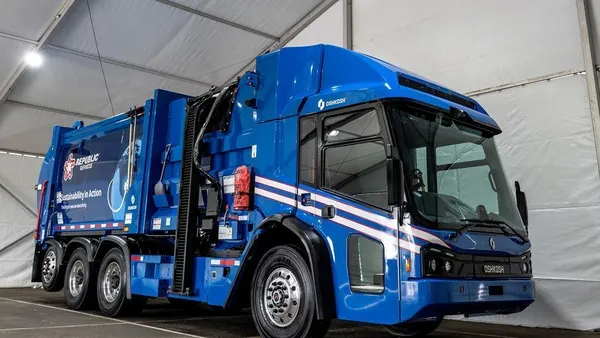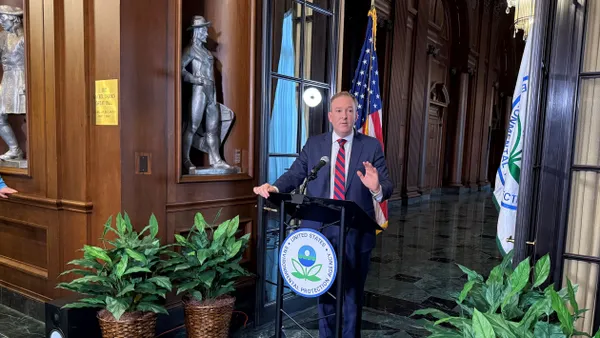Dive Brief:
-
Nearly half (45%) of holiday shoppers will have returned unwanted items between Dec. 26-31, according to reverse-logistics firm Optoro, with by far the most (91%) of returns happening in stores. Last year, shipper United Parcel Service said it expected to deliver a record 5.8 million returns packages to retailers during the first week of January and 1.3 million returns on Jan. 5 alone, a day the company has dubbed "National Returns Day."
-
Total merchandise returns account for more than $351 billion in lost sales for U.S. retailers, according to a report from retail performance improvement solutions Appriss Retail emailed to Retail Dive. While returns are technically lost sales, however, the return process actually provides an opportunity for retailers to recoup that somewhat, considering that 57% of shoppers make additional purchases while they're in those stores, according to Optoro.
-
Unwanted merchandise present retailers with logistics problems, especially when goods are damaged or when returning goods to shelves or warehouses is too cumbersome a process. While half of returns are re-shelved to be resold, some 5 billion pounds of returned goods end up in landfills, equivalent to the trash produced by 5 million Americans, and the returns process accounts for 1.6 billion gallons of diesel fuel and 15 million metric tons of CO2, according to an email Optoro sent to Retail Dive.
Dive Insight:
While the holidays have always spurred a high percentage of retail returns, e-commerce has only fueled that, and more and more it's an issue throughout the year. Returns are increasingly a part of the shopping experience, particularly online, with nearly half (48%) of shoppers surveyed saying that they'd returned an online purchase in the last year, according to research from post-purchase solutions firm Narvar. Another half (49%) of shoppers check a retailer's return policy before completing an online transaction.
In fact, shoppers buy multiple items with the intent to return some of them (especially when it comes to apparel and home goods), a practice Narvar refers to as "bracketing." On average, 40% of shoppers "bracket" their purchases at least occasionally, with 45% of those under 30 and 48% of those with incomes over $100,000 bracketing their online purchases. Apparel is returned most often (43%), according to the survey.
Retailers are making the whole process much easier, according to the UPS Pulse of the Online Shopper study last year, which that between 2012 and 2016, shoppers reported fewer issues paying for returns shipping (decreasing from 66% to 50%), paying restocking fees (decreasing from 43% to 27%) and experiencing a delay in receiving credits or refunds (decreasing from 41% to 27%).
And so they should, according to Optoro, which says that a smooth returns policy pleases customers. The key is to engineer solutions to make the process easier and less costly to retailers and the environment, too, according to Optoro co-founder and CEO Toby Moore.
"What we've been doing is creating more efficient solutions that connect the product to their best home … so it cuts out all those redundant middlemen and touches that are wasting a lot of energy in shipments but more so which are costing so much that it doesn't make much economical sense for a retailer to recycle a good or to even resell it, so they end up throwing it away," Moore said in a podcast sponsored by UPS.
Moore says demand for a streamlined returns process will only grow, considering not just the growth in e-commerce and mobile-based commerce, but also voice-enabled commerce. "We expect to see that same trend this year and it will grow with the growth of e-commerce and mobile and now … voice commerce," Moore said. "We talk about buying items that you can't touch and feel and often that causes more returns … now it's going to be buying things sight unseen as well."
This story is part of Retail Dive's ongoing coverage of the 2017 holiday shopping season. You can browse our holiday page and sign up for our holiday newsletter for more stories.















